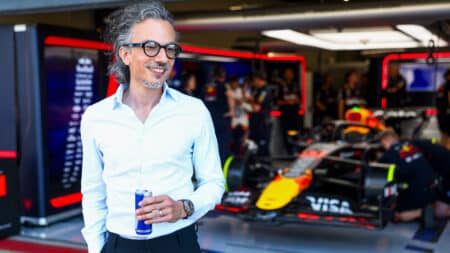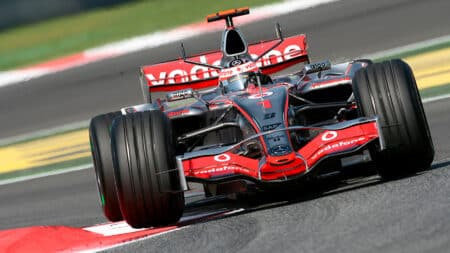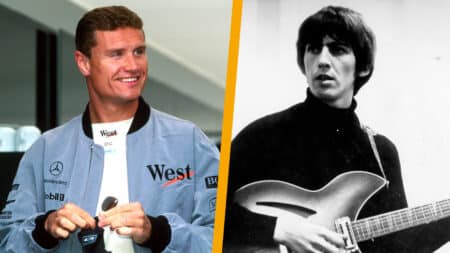
MPH: To the man trying to fill Christian Horner's shoes: good luck!
Laurent Mekies arrives as Red Bull F1 team principal with a series of immediate challenges to solve and long-term issues to tackle. He'll either sink or swim, says Mark Hughes
The upholding of Daniel Ricciardo’s disqualification from second place in the Australian Grand Prix at the FIA Court of Appeal was not wholly surprising. On other matters of technical nicety at the beginning of a new formula, with precedents yet to be established, the FIA might have dealt with it behind closed doors – but with something as central to the new formula as the fuel flow, it could not afford to display any leeway.
It certainly could not afford to accept the principle that it was OK for a team to ignore the FIA readings even if they did believe them to be inaccurate and rely on the team’s own instead, which is what Red Bull did.
In this formula the fuel flow is effectively the equivalent of the cubic capacity of the engine in the previous formula. It is the central limiting factor to the power potential of the engine/ers and the effect of increasing the flow is much the same as increasing the capacity would have been previously. Furthermore, there’s potentially a compounding effect as the increase in fuel flow could allow an appropriate increase in turbo boost pressure.
We could have had the same effect on power limitation by artificially limiting turbo boost rather than fuel flow, but then the fuel could have been used to speed up the turbo, which would not have been energy efficient and not therefore taking engine development in the direction the manufacturers wished to see.
Having both a fuel capacity and a fuel flow limit seems to have caused a certain amount of confusion, especially given that both are expressed in values using 100kg. Had the capacity remained at 100kg, but the maximum instantaneous fuel flow allowed been expressed as, say, 1.67kg per minute or 0.0278 kg/second, then maybe people wouldn’t have been trying to join them up. But even those who fully grasp the distinction still pose a valid question when they ask, ‘why can’t the flow requirement be abolished and just have the 100kg total usage?’
Were that to happen, the software of the engines would allow them to be mega-boosted at the beginning of each straight in qualifying – and at stages in the race. We would certainly be looking at power figures in excess of the 1500bhp the previous F1 turbos of 1.5 litres were generating. That would be fine – enormously exciting even – for qualifying.
But for the race the FIA was concerned about potentially massive and unpredictable speed differentials between cars – because if the software gave access to mega boost levels but the car could still not consume more than 100kg, the mega boost would be used by drivers tactically at different times in the race so that at a circuit where 100kg equated to 2.5kg per lap, they may use 2kg on one lap to give them access to 3kg and massive boost on the next.

Turbo Ferrari vs Tyrrell-Ford, 1984
As the various cars got out of phase with each other on this – and with no way of knowing which cars were running which boost at any given moment – you’d potentially have 800bhp cars running with cars of 1600bhp or more. Yes, it was like this in the days when DFVs shared the track with unlimited turbos in qualifying (the differences were ‘only’ around 250-300bhp in the race), but at least then the drivers always knew which cars were which – they didn’t change identity by the lap.
This is all background to why the governing body was so adamant about policing a piece of technical regulation that lies at the very heart of the philosophy of the new formula. Ricciardo was unlucky to be so afflicted in Australia, but Red Bull was always taking a risk in ignoring the FIA’s request to conform regardless of what its own fuel flow readings were telling them.
More from Mark Hughes
Bernie-led consortium to buy part of F1?
Red Bull’s fuel flow appeal
Success should come to Valtteri Bottas

Laurent Mekies arrives as Red Bull F1 team principal with a series of immediate challenges to solve and long-term issues to tackle. He'll either sink or swim, says Mark Hughes

Former McLaren F1 team-mates Mika Häkkinen and David Coulthard are set to renew old rivalries in a new Evening with... tour – they told James Elson all about it

In Formula 1, driver contracts may look iron-clad on paper, but history shows that some of its biggest stars have made dramatic early exits

Former McLaren F1 ace told James Elson about his private audience with The Beatles' George Harrison, who played an unreleased grand prix-themed song